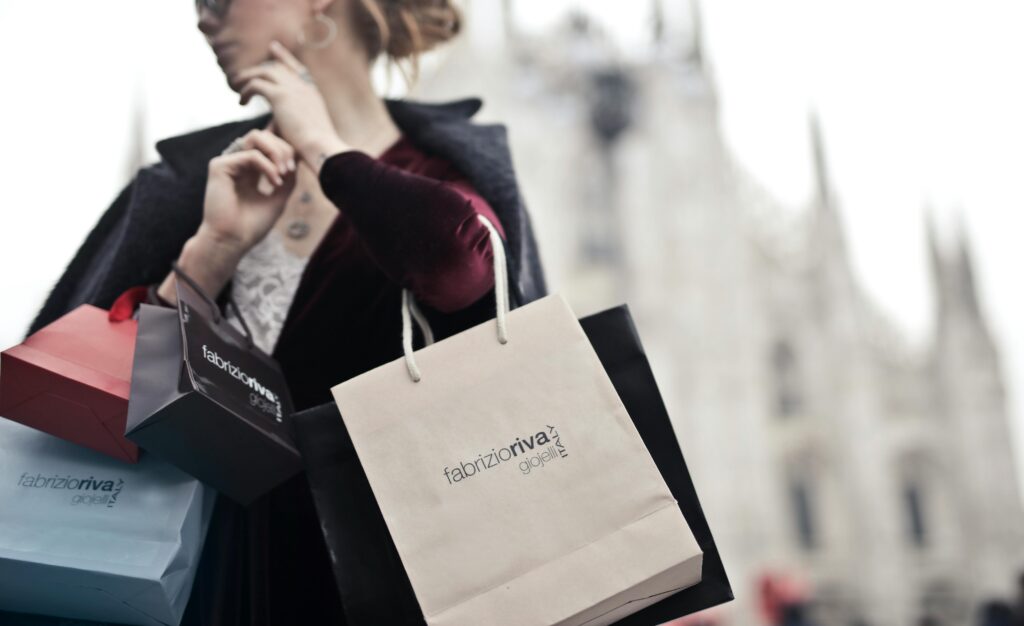
Italy has long been a hub of exquisite fashion, offering a blend of timeless elegance and modern trends. If you’re a retailer or boutique owner looking to source high-quality Italian clothing, exploring Italy fashion wholesale is the key to success. From luxurious fabrics to impeccable craftsmanship, Italian fashion continues to dominate the global market. In this guide, we’ll uncover the best wholesale suppliers, tips for importing Italian fashion, and why Italian clothing is a must-have for your store. Read on to find trusted sources and valuable insights to grow your fashion business with Italian style.
Why Choose Italian Fashion Wholesale?
Italian fashion is synonymous with quality, craftsmanship, and innovation. From iconic brands like Gucci and Prada to artisan manufacturers, Italy offers unparalleled variety for wholesalers. Here are key reasons to consider Italian fashion for your store:
- High-Quality Materials: Italy is renowned for its use of premium fabrics such as silk, wool, and leather, ensuring durability and luxury.
- Craftsmanship: Italian artisans are celebrated for their attention to detail, producing pieces that stand out in any collection.
- Timeless Style: Italian designs strike a perfect balance between contemporary trends and classic aesthetics, making them universally appealing.
- Global Appeal: Customers recognize the value of “Made in Italy” labels, which can elevate your store’s reputation.
Top Italy Fashion Wholesale Suppliers
Finding reliable suppliers is critical to sourcing Italian fashion for your business. Here are some trusted wholesale providers:
- Italmoda: Specializing in luxury wholesale, Italmoda provides high-end clothing, footwear, and accessories from top Italian brands.
- Fashion Italy Wholesale: A go-to platform for retailers, offering competitive prices on designer and non-designer Italian collections.
- Pronto Moda: Known for fast fashion, Pronto Moda caters to retailers looking for on-trend Italian styles.
- Michelangelo Wholesale: This supplier focuses on artisanal, small-batch Italian clothing perfect for boutiques.
Tips for Importing Italian Fashion Wholesale
When importing Italian fashion, it’s important to navigate logistics and regulations effectively. Here are some tips:
- Understand Import Duties: Familiarize yourself with customs regulations and taxes in your country to avoid unexpected costs.
- Establish Clear Communication: Many Italian wholesalers operate in different time zones and may not speak fluent English. Ensure communication is clear and professional.
- Order Samples: Before committing to a large order, request samples to confirm the quality matches your expectations.
- Consider Freight Options: Air shipping is faster but more expensive, while sea freight is cost-effective for large orders.
How to Identify Authentic Italian Fashion
The “Made in Italy” label is a mark of authenticity and quality, but there are imitations on the market. Follow these steps to ensure you’re sourcing genuine Italian products:
- Inspect Labels: Authentic products clearly state “Made in Italy” and often include detailed information about the manufacturer.
- Research Suppliers: Verify the supplier’s credibility through reviews, references, or even site visits.
- Evaluate Craftsmanship: Authentic Italian fashion is characterized by impeccable stitching, fine fabrics, and superior finishing.
Trends in Italian Wholesale Fashion
Italian fashion adapts to global trends while retaining its unique identity. Here are current trends you can expect from Italian wholesale collections:
- Sustainability: Italian brands are embracing eco-friendly practices, offering sustainable fabrics and production methods.
- Vintage Revival: Classic styles from past decades are making a comeback, especially in smaller, boutique collections.
- Bold Prints: Italian designers are incorporating bold patterns and vibrant colors, perfect for stand-out collections.
Maximizing Profits with Italian Fashion Wholesale
To make the most of your investment in Italian wholesale fashion, consider the following strategies:
- Curate Exclusive Collections: Offer unique, high-quality pieces that set your store apart from competitors.
- Emphasize Marketing: Highlight the “Made in Italy” label in your branding and promotional materials.
- Build Customer Trust: Educate your customers on the value and craftsmanship behind Italian fashion.
How to Start a Wholesale Partnership with Italian Suppliers
Starting a successful partnership with Italian wholesale suppliers requires strategy and careful planning. Here’s how you can establish strong relationships:
- Do Your Research: Identify suppliers that align with your business needs. Look for reviews, case studies, or recommendations from other retailers.
- Reach Out Professionally: Approach suppliers with a clear proposal and demonstrate how a partnership can benefit both parties.
- Negotiate Terms: Discuss pricing, minimum order quantities, and payment terms upfront to avoid misunderstandings.
- Build Long-Term Relationships: Loyalty often leads to better deals and priority access to new collections.
- Visit Trade Shows: Attending Italian fashion trade shows like Pitti Uomo or Milano Unica allows you to network and find trusted suppliers.
Key Considerations When Choosing Italian Wholesale Products
Choosing the right Italian fashion products is crucial for meeting your customers’ needs. Consider the following factors:
- Target Audience: Understand your customers’ preferences, whether they value luxury, affordability, or sustainability.
- Seasonal Trends: Italian fashion is highly seasonal. Stay updated on the latest collections for spring/summer and autumn/winter.
- Product Variety: Offer a mix of items, including clothing, shoes, and accessories, to maximize appeal.
- Price Points: Balance high-end luxury items with affordable yet stylish options to attract a broader audience.
- Stock Turnover: Choose products that are likely to sell quickly to maintain a healthy cash flow.
The Role of Italian Fashion in Global Retail Markets
Italian fashion has a significant impact on the global retail landscape. Here’s why it remains a top choice for retailers:
- Cultural Prestige: Italian fashion is seen as the epitome of style, attracting customers seeking sophisticated designs.
- Export Power: Italy is one of the largest exporters of luxury goods, making its fashion highly accessible to international retailers.
- Diverse Styles: From streetwear to haute couture, Italian fashion caters to various market segments.
- Collaborations with Global Designers: Italian brands frequently collaborate with designers worldwide, creating innovative collections.
- Growing Demand: The global appreciation for quality and craftsmanship drives increasing demand for Italian fashion.
How to Market Italian Fashion to Your Customers
Once you’ve sourced Italian wholesale products, effective marketing is key to success. Here are some strategies:
- Highlight the Exclusivity: Use marketing copy that emphasizes the exclusivity and craftsmanship of Italian-made products.
- Leverage Social Media: Platforms like Instagram and Pinterest are perfect for showcasing the elegance of Italian fashion.
- Educate Your Customers: Share stories about the artisans and brands behind the products to build emotional connections.
- Run Seasonal Campaigns: Promote collections in line with seasonal trends, such as summer resort wear or winter coats.
- Collaborate with Influencers: Partner with fashion influencers who can showcase your products to a larger audience.
Challenges in Sourcing Italian Fashion Wholesale
While Italian fashion offers numerous advantages, sourcing wholesale products can come with challenges. Here’s how to overcome them:
- High Costs: Italian fashion is often more expensive due to its quality. Mitigate this by negotiating bulk discounts or offering premium pricing to customers.
- Logistical Complexities: Shipping internationally requires navigating customs and freight options. Work with experienced logistics partners to streamline the process.
- Language Barriers: Some suppliers may not speak fluent English. Use translators or hire agents familiar with Italian business practices.
- Counterfeit Products: Protect your business by verifying the authenticity of suppliers and products.
- Currency Fluctuations: The exchange rate can impact your overall costs. Monitor rates and plan purchases strategically.
Conclusion
Italy’s fashion wholesale offers a wealth of opportunities for retailers looking to provide customers with high-quality, stylish clothing. From sourcing authentic Italian products to navigating logistics and marketing, this guide has covered every aspect of building a successful Italian fashion business. By leveraging trusted suppliers, staying updated on trends, and effectively promoting your offerings, you can position your store as a premium destination for Italian fashion. Take the next step today and bring the elegance, craftsmanship, and prestige of Italy to your customers!

